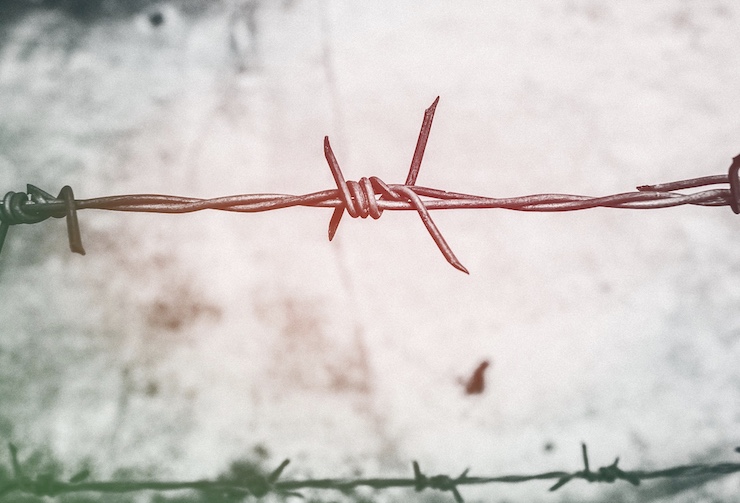More Drones Are Monitoring America’s Southern Border

Protecting America’s 2000-mile long southern border with Mexico is a major component of our country’s national security strategy. The clandestine pathways that allow tens of thousands of illegal immigrants to try to cross the border each year are the same ones that facilitate the entry of drug gangs, terrorists and sex traffickers. In theory, unmanned aerial vehicles (UAVs) could have a major role to play in assisting US custom and border control authorities to detect and monitor these movements, and apprehend the perpetrators. Yet the evidence that drones are fulfilling their border control potential is mixed.
US Customers and Border Protection (CBP) received its first UAVs – six Predator drones, the same ones used to launch missile attacks in Iraq and later Afghanistan – in 2006, when the US Congress became increasingly concerned about rising levels of illegal immigration. The drones, which were unarmed, were large and clunky and expensive to purchase and operate (about $15 million each and $12,500 per mission). CBP began employing the drone to survey the length of the border using image sensing to detect suspicious human traffic. How well did they work? Not well, according to various reports including one published by the CATO Institute in 2018. CATO produced evidence that the drones had played a role in less than 1% of border apprehensions and and just 3% of marijuana busts while also exceeding their mandate by conducting unlawful surveillance of private citizens well north of the border. CATO called for border drone operations to be abolished – or scaled back
Instead, CBP, with bipartisan support from Congress, proceeded to invest in a new generation of smaller and more agile drones with upgraded thermal sensing and visual technology to improve drone performance. While the FAA had required the Predators to fly at extremely high altitudes (28,000 feet), the new generation of smaller drones could fly close to the ground, even identifying the ethnicity, height, weight, and hairstyle of those under video surveillance. Drone operators could also read license plates, signs, and banners from the air, maximizing their utility for distinguishing smugglers from legal travelers and enhancing apprehension.
These smaller drones, dubbed small unmanned aerial systems, or sUAS, were not only smaller but lighter – weighing less than 55 pounds. They were also much cheaper to acquire than Predators and far less expensive to operate. Their chief downside was their more limited flight time and greater vulnerability to bad weather conditions.
Despite these advantages, there is not much evidence that CBP has relied heavily on its new fleet of sUAS. Published reports suggest that the agency has trained just 25 border patrol agents to fly them and hard data on their actual field performance is scarce. However, anecdotal reports suggest that the sUAS improve close-in detection and identification but are far less useful for surveilling large expanses of land or long stretches of the border. CBP, it turns out, continues to rely heavily on large tracking towers for this purpose and no longer deploys its old Predators in this role.
Undoubtedly, the election of Donald Trump as US president in 2016 created a fresh rationale and catalyst for expanded drone use among the US-Mexico border. The new president declared illegal immigration a national emergency and called for the erection of a 30-foot high wall to deter illegal border crossers. While debate over the wall raged, with Democrats and some Republicans opposing the plan, the two sides did agree on the need for ground sensors and drones. Congress appropriated a whopping $100 million to purchase a mix of new and better drones including fixed wing drones that could stay airborne longer and unmanned drones that could be launched by hand
Trump’s re-election defeat in 2020 largely stalled the new drone momentum. President Biden has blocked further work on the wall and tried to reverse many Trump policies aimed at discouraging border crossers. While drones are flying, apprehensions are way down. Biden has insisted that border drones not engage in close-in video surveillance activities and has even restricted media organizations from reporting on recent border surges with their own drone photography.
But pressure on Biden to expand the use of drones will likely continue. In part that’s because the drug cartels have begun flying their own drones along the border to try to evade CBP detection and to engage in aerial combat against their enemies. According to Department of Homeland Security officials, Mexican drug cartels over the past year have flown more than 9,000 drone sorties into U.S. airspace to surveil American law enforcement and security operations, primarily in Texas and Arizona. The drones are monitoring the operations of federal, state, county, and city agencies, including the U.S. Border Patrol, Texas Department of Public Safety, Texas National Guard, county sheriffs and local police.
So far, CBP has captured about a dozen of the cartel’s drones, and has accessed their guidance and memory systems to gain intelligence information. Alarmed, some members of Congress have called on the Pentagon to shoot down the cartel’s drones, some of which are likely armed with bombs and even rockets. It could be that a new and more dangerous phase of “drone vs. drone” warfare on the southern border is about to get underway.
|